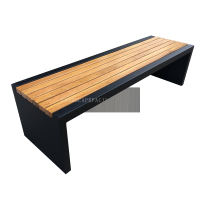Welcome to the website for landscape facilities products and knowledge.
What are the most common customer preferences regarding the table’s finish or coating?
When selecting tables for their homes or offices, customers demonstrate clear preferences regarding finishes and coatings that balance aesthetics, durability, and maintenance requirements. The most sought-after finish types generally fall into several distinct categories that cater to different practical needs and design sensibilities.
Matte and satin finishes currently dominate customer preferences for their ability to conceal fingerprints, scratches, and dust particles. These non-reflective surfaces have gained significant popularity in contemporary interior design schemes, particularly for dining tables and workstations where visual comfort during extended use is paramount. The understated elegance of matte finishes appeals to those seeking minimalist aesthetics without compromising on practicality.
Glossy and high-gloss coatings maintain their appeal among customers desiring formal, traditional, or luxury appearances. While these finishes require more meticulous maintenance to preserve their mirror-like quality, they continue to attract buyers who prioritize visual impact and reflective properties that can enhance natural light distribution in smaller spaces. The perception of luxury associated with high-gloss surfaces ensures their continued market presence despite higher maintenance demands.
Protective coatings represent another significant preference segment, with customers increasingly seeking solutions that combine beauty with resilience. UV-protected finishes, scratch-resistant coatings, and heat-proof surfaces rank highly among families with children and pet owners. The technological advancement in protective clear coats allows manufacturers to meet these demands without sacrificing aesthetic quality, creating surfaces that withstand daily wear while maintaining their visual appeal.
Natural oil and wax finishes have experienced renewed interest from environmentally conscious consumers and those appreciating organic material characteristics. These penetrative coatings enhance wood grain visibility while offering repairability advantages – scratched or damaged areas can be spot-treated without refinishing entire surfaces. The growing sustainability movement has positioned these natural options as preferred choices for customers valuing authenticity and eco-friendly manufacturing processes.
Texture has emerged as a crucial factor in finish selection, with customers showing increased interest in distressed, hand-scraped, and wire-brushed finishes that conceal usage marks while adding dimensional character. These textured options particularly resonate in casual dining and living spaces where perfect, unblemished surfaces might feel formal or intimidating. The practical benefit of disguised wear patterns makes textured finishes particularly appealing for high-traffic environments.
Color preferences in table finishes reveal interesting patterns, with neutral tones dominating mainstream markets while bold colors attract niche segments. Warm grays, natural wood tones, and whitewashed finishes maintain broad appeal for their versatility in coordinating with existing decor. Meanwhile, dramatic dark ebony finishes and unconventional color stains attract design-forward consumers looking to make stronger visual statements with their furniture selections.
The evolution of customer preferences indicates a clear trajectory toward finishes that offer both visual appeal and practical resilience. As living spaces become more multifunctional, the demand for table coatings that can withstand diverse activities while maintaining aesthetic integrity continues to shape manufacturing innovations and consumer choice patterns across furniture markets.
Related search:

Recommendation
Modern Stainless Steel Begonia Wood Park Chair Outdoor Courtyard Leisure Sun Protection Bench Long Seat